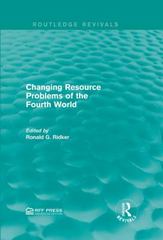Question
At thesecond stageof regional economic integration, member countries must participate in the creation of thecommon external tariff against non-member countries, so as to limit their
At thesecond stageof regional economic integration, member countries must participate in the creation ofthecommon external tariffagainst non-membercountries, soas to limit their market supply and demand among themselves, which will subsequentlystabilize market equilibrium or price stability. Because ofthis policy, whichisadopted by member countriesof the regional economic integration withimposition ofthe common external tariffagainst non-member nation-states
a.Commonwealth of Independent States like the Post Soviet of 1991
b.Chinasation as the largest market
c.Customs Union
d.Mass Marketing
Potential member countries desiring for a regional economic integration should align andcommit their economic policies to Neoliberalismcomplying to
a.Liberalization, Privatization, National Socialism, Globalization, Free Trade, Fiscal Discipline and Global Banking
b.Liberalization, Privatization, Totalitarianism, Globalization, Free Trade, Fiscal Discipline and Global Banking
c.Liberalization, Privatization, Deregulation, Globalization, Free Trade. Fiscal Discipline and Global Banking
d.Liberalization, State Capitalism & Crony, Globalization, Free Trade, Fiscal Discipline and Global Banking
Taxes, tariffs, budget management and government spendingon projects and operations are economic policy of the Philippines government known as
a.Marketing Channels
b.Market segmentation
c.E-Commerce
d.Fiscal Policy
Economic policies of the government pertaining to the regulation of bank savings, loans and mortgageinterest rates to control money supplyor money circulation and business and consumer demands for stable market prices, including membership in Regional Economic integration with the policy on "single currency". What economic policy is being referred to this?
a.Cold War
b.Monetary Policy
c.Communism
d.Chinese Socialist Market Economy
On the contrary of free market economy, the Buddhist, believer of Buddha embraced the concepts ofKarma or the law of cause and effectsthat too much materialism, greed, avarice, jealousy and consumerism will man into fatigue and stress of the cycle of birth, death reincarnation of spiritual to lower being. How is it called in Asian philosophy of Buddhism a person who practices restraint, or detaching from the worldly materialism into spiritual perfection?
a.Capitalism
b.Asceticism
c.Racist National Socialism
d.Communism
The Asia-Europe Meeting (ASEM) political dialogue forum to enhance relations and various forms of cooperation between its partners established in Bangkok, Thailand on March 1, 1996 consisting of partners like
a.The 15 member nation-states of the European Union (EU), the European Commission, the 7 member nation-states of the Association of Southeast Asian Nations (ASEAN) individual countries like People's Republic of China, Japan and South Korea
b.The 15 member nation-states of the European Union (EU), the European Commission, the 7 member nation-states of the Association of Southeast Asian Nations (ASEAN) individual countries like Central African Republic, Republic of Congo and Democratic Republic of Congo
c.The 15 member nation-states of the European Union (EU), the European Commission, the 7 member nation-states of the Association of Southeast Asian Nations (ASEAN) individual countries like People's Republic of China, Republic of Taiwan and Madagascar
d.The 15 member nation-states of the European Union (EU), the European Commission, the 7 member nation-states of the Association of Southeast Asian Nations (ASEAN) individual countries like People's Republic of China, Japan and Communist North Korea
The EU Institutions of theEuropean Parliament, European Council, Council of the European Union, the European Commission and the Court of Justiceof the European Union among the stages of regional integration are known as
a.Customs Union
b.Political Union
c.Single Currency
d.Free trade zones
Liberalization of trading of rice in the Philippine, this could mean when the economy liberalize, it commits the economy to
a.Removal of Subsidy
b.Removal of Corporate Stock Options to Farmers
c.Removal of Tax Holidays
d.Removal of Quotas
Rice Tariffication Law of the Philippine, how much tariff that government shall be imposing on rice imports?
a.35% Tariff for all ASEAN and Non-ASEAN members
b.40% flat from ASEAN and Non-ASEAN Members
c.35% from ASEAN Members and 40% from Non-ASEAN Members
d.40% from ASEAN Members and 35% from Non-ASEAN Members
The Islamic banking, financing of business projects and enterprises could be approved for joint ventures if it is in accordance morality and ethics according to the teachings of the Holy Quran and the Sayings and Deeds of Prophet Muhammad. This is Islamic Banking requirement is called
a.Jewish Kosher Consumption
b.Brahmins, Kshatriyas, Vaishyas and the Shudras in Hindu Caste System
c.Shariah-Compliant Investments
d.Business Monopoly
With the 35% tariffs for ASEAN members and 40% tariffs for Non ASEAN members are expected to generate P10 billion funds that are meant to be used to support the farmers in farm machinery, equipment, farmers' cooperatives, seed development and credit assistance called as
a.Charitable funds of the International Non Government Organizations
b.Special Economic Zones
c.Foreign Currency Reserves
d.Rice Competitiveness Enhancement Fund
The quota system imposed by the Philippines government on rice is importation that has been removed by Rice Tariffication Law.
a.Production Subsidy
b.Tax Holidays
c.Quantitative Restrictions
d.Re-Exportation
Islamic banking prohibited the use of riba or interest rates in the Western Christian conventional banking and instead it fostered bank financing under the system of
a.Earning per share
b.Dividend Yields
c.Discounting rates
d.Profit, Risk and Loss Sharing
When an investor focuses on the price, profit and risk fluctuations of his financial instruments like shares of stocks and bonds in the future, then he is managing finances based on
a.Morally compliant products in Shariah
b.Speculations
c.Social Work in the International Non Government Organizations
d.Prohibitions of Interest rates
It is a business agreement of buying and selling at a specific price on a specific date in the future, for example corn, cocoa, sugar and others; that when price increases of the product, the supplier gains additional profit while the buyers of the products loses money, vice-versa.
a.Money Market
b.Public Market
c.Capital Market
d.Commodity Futures Market
Step by Step Solution
There are 3 Steps involved in it
Step: 1

Get Instant Access to Expert-Tailored Solutions
See step-by-step solutions with expert insights and AI powered tools for academic success
Step: 2

Step: 3

Ace Your Homework with AI
Get the answers you need in no time with our AI-driven, step-by-step assistance
Get Started


